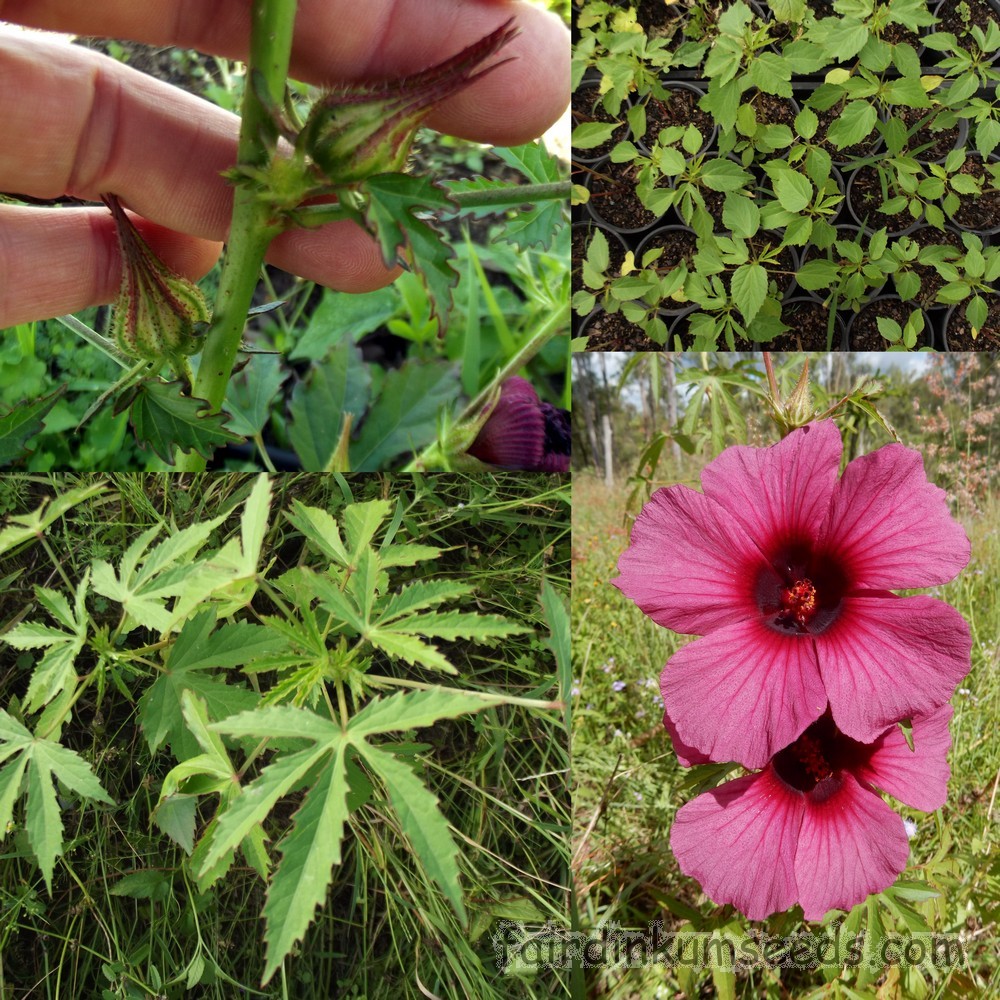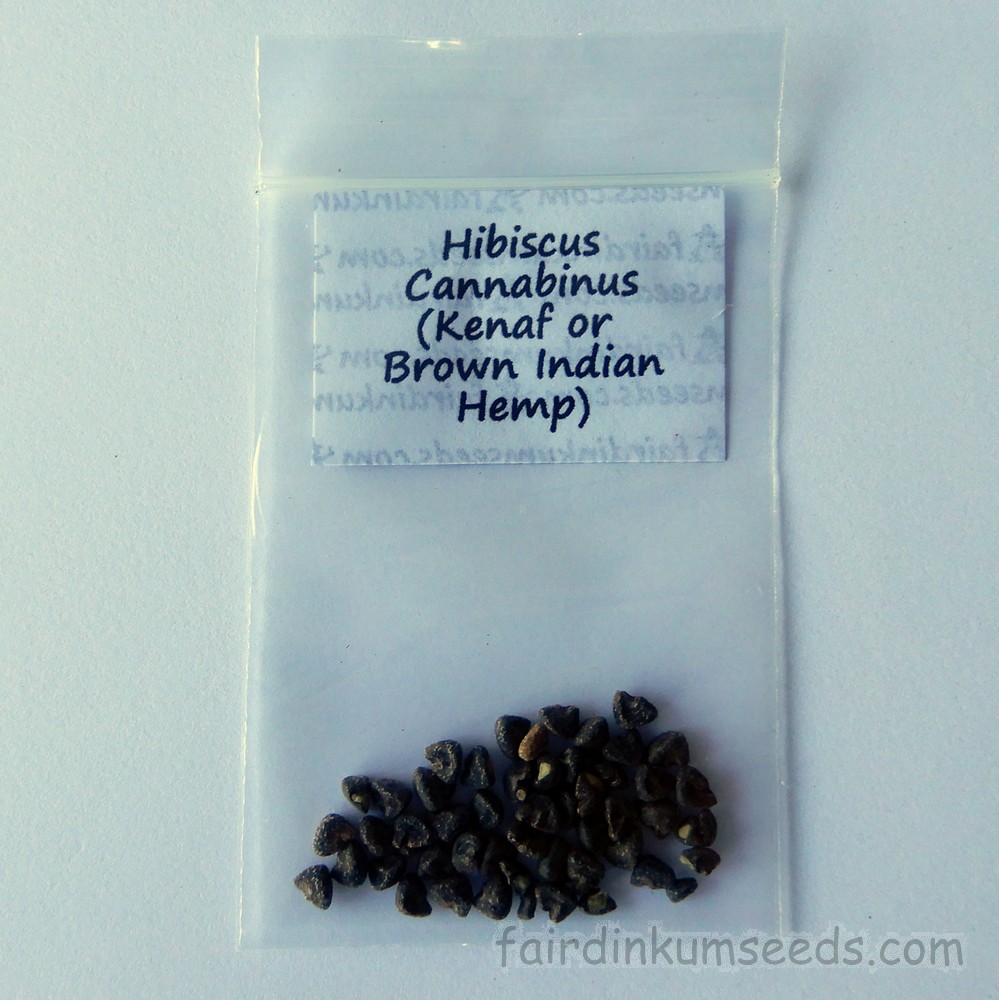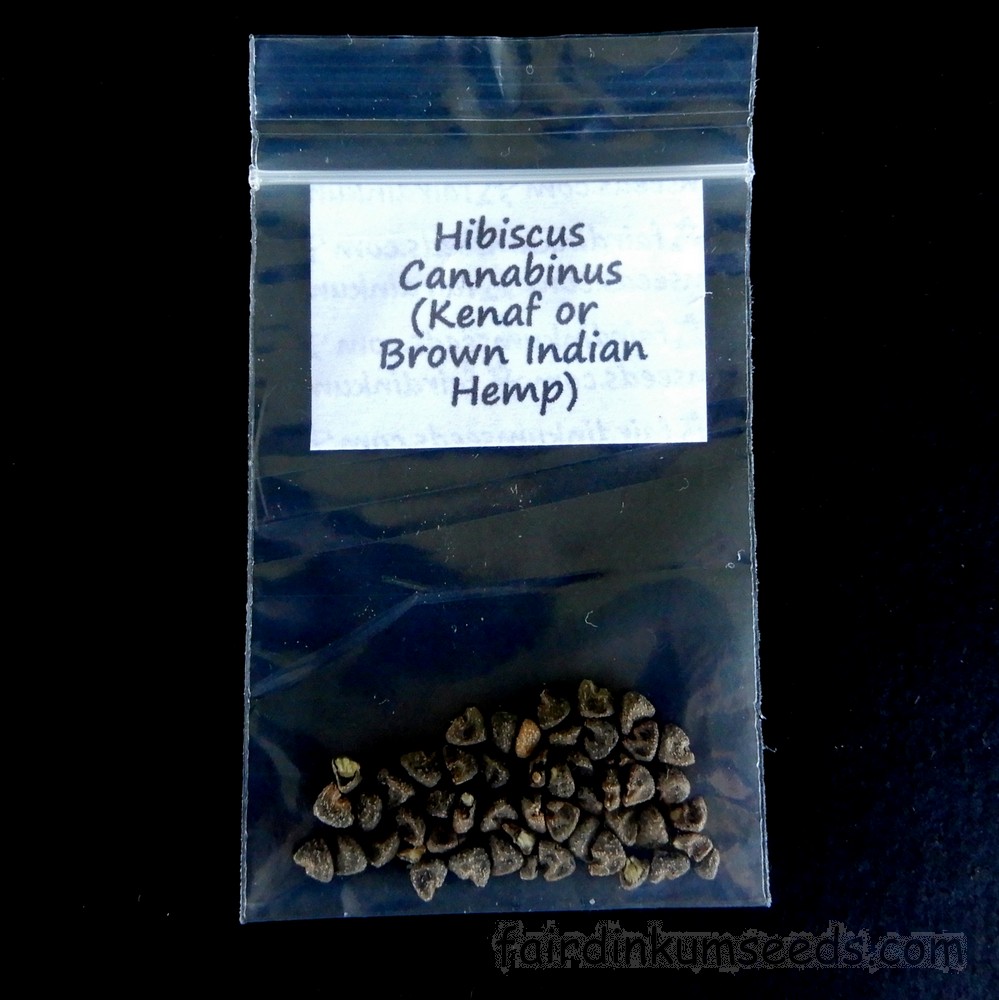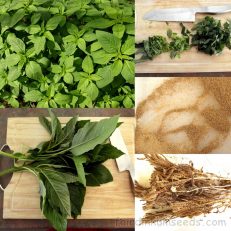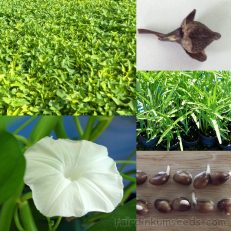Please read text!
Hibiscus Cannabinus Red Kenaf Brown Indian Hemp Seeds
Packet of 30+ home grown organic seeds!
Been growing it for years, but things get a bit hectic at times and I have just never got around to adding it to the website.
It is a great plant from purely an ornamental point of view, with masses of dark pink to red colored flowers.
*Before I get even more emails I will say straight off the bat that yes, it does have “hemp” in the common name, and yes, it does have a cool looking leaf too, but this is definitely not Cannabis species.
No I don’t grow marijuana or or any other illegal species, and no, I can not source illegal drugs for you even if you ask me really nicely, or if you want it for use as a medicine only.
No, you definitely shouldn’t waste both our time double checking, just in case..
After all these years the 1-3emails a week when clearly I am not that sort of store gets a bit tedious…
Everyone read that bit?
Cool, lets move on.
The leaves are edible with a mild lemony tangy, and in southern India they are a very common pot herb known most commonly as gongura.
It is prized for its high iron content, along with having a whole host of medicinal uses.
The flowers can be eaten too, just as is when wandering around the garden like I do, or torn up in salads to add antioxidants and a splash of colour.
The seeds can be roasted or ground into flour and made into a kind of cake or bread, and it can also be whole pressed for oil.
They are considered aphrodisiac or as diet supplements to increase weight and they contain 18-35% oil.
It is said to be very similar in consistency to peanut oil and I have it one the to do list to have a crack at making some myself.
It is refined and used for cooking, but also as a varnish and sealant on both wooden and metal tools, as a lubricant, for making soap and paint, and for burning in oil lamps.
Even the root is edible being best used in slow cooked or pressure cooker meals to add some oumph and help thicken it up.
The fibre from the main stems are used for making rope, nets, cordage, canvas, and paper, and in the large scale commercial plots 2 or 3metre long strands are not uncommon.
There are a couple newspapers around the world that boast their product is produced solely from this environmentally friendly and 100% sustainable resource, and not only is it better for the environment than logging of old growth forests, it produces a better quality product, with a much higher strength and resistance to tearing.
The world wide production for this species is around 300,000tonnes, mostly coming from India, China, Africa, and Malaysia, but I reckon Australian production will definitely increase as our forests continue to dwindle and costs of logging increase.
Traditional Ayurvedic medicine prescribes the leaves for dysentery, listlessness, nausea, acidic reflux, anaemia, fatigue, lassitude, blood and throat disorders.
The slimey texture really soothes the throat and lessens cough.
They are used as a poultice and the mashed leaves dry to form a sort of gummy glue that keeps wounds covered and protected and I have used it myself from time to time.
It is used the same way on insect, spider bites, scorpion stings, splinters, boils and skin conditions.
In many parts of Africa the leaves are dried and powdered, then mixed with neem oil and applied as a treatment for Guinea worms.
It is considered a much more effective alternative to modern vermicide and antibiotic treatments and if you want to feel a lot better about your quality of life, or if you are a thrill seeker in the mood for some nightmares then a quick Google images search of “Guinea worm infestation” maybe just what you need…
The whole plant is considered an excellent fodder, and the waste material left over from leaf harvest is chopped finely and mixed with peat moss and fertilizers as a growth medium for seedlings and cuttings.
Known commonly by the following names Ambadi, ambadi, ambari, ambari, ambika, apocino, bastard jute, bhindi ambodi, bimli, bimlipatum, brown indian hemp, brown indianhemp, chanvre de bombay, chanvre de guinee, chanvre de guinee, cânhamo brasileiro, decan hemp, deccan hemp, deccan hemp, dekkanhanf, gambonhanf, gonkura,guinea hemp, gujarati, hab-el zalim, hemp-leaf hibiscus, hibiskus, indian-hemp, java-jute, jawa-jute, jawa jute, jute, kanaf, kannada, kanuriya, kenaf, kenaf, kenaf hibiscus, ketmia konopiowata, machika, maryurika, mesta, nacacha, nalita, nhacandora, oriya, palungu, patsan, patsan, pimdikura, pitwa, pulimanji, rostmalyva, sahasravatamulika, san, sosoori, sosoori, sougri, sougri, wilde stokroos, wild stockrose or sometimes the synonyms Hibiscus henriquesii, Abelmoschus congener, Abelmoschus verrucosus, Furcaria cannabina, Furcaria cavanillesii, Hibiscus congener, Hibiscus malangensis, Hibiscus obtusatus, Hibiscus vanderystii, Hibiscus vitifolius, Hibiscus wightianu.
No doubt there are hundreds more I missed.
Most literature I have seen says it is probably native to Africa, East Indies, Asia, or Australia, where as the Queensland government says it is a recent introduction and there have even been a few large scale crop trials over the years here.
Apparently sowing rates of 15 kg/ha has given reasonable stands with a population of between 380,000 and 450,000 plants/ha (germination is between 85 and 90%).
Anyway, its a great plant as an ornamental, just as good as a vegetable, it has potential as an oil crop, something I plan on testing myself soon.
It is nutritious, has many medicinal properties, makes awesome trellises, and can easily be stripped for cordage.
Two quick points before I go.
1. Be careful buying this species from other sources as when I just had a quick look around it seems 80% of folks show pictures of completely different species, and the other 20% are using pictures that were open sourced or stolen from other folks. I didn’t see any pictures of plants they are actually growing.
It doesn’t necessarily mean they don’t have it and are gonna send you some other much easier to source crap instead, but it does make you wonder…
2. I say again just for clarity.
No, I can’t get you a bag of weed or source marijuana seeds, even just for use as a medicine!
No, you should not ask me just in case.
I only grow and sell legal species and I am way too busy for nonsense.
Grown by me and the Mrs organically, no chems, no nasties no problems!!!
